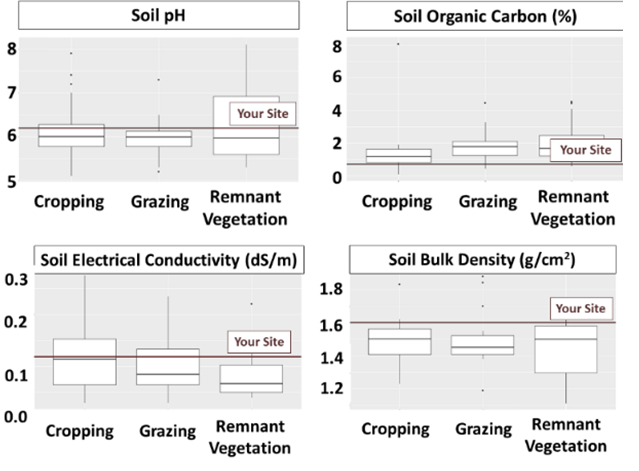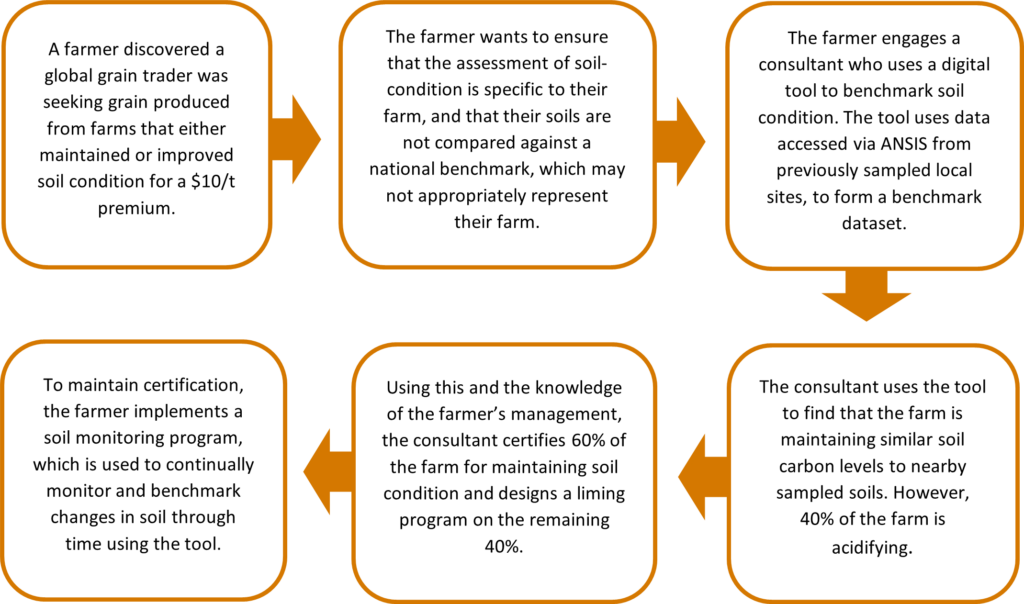ANSIS use case: Soil data benchmarking tool
Use cases help to illustrate the potential benefits and value of the Australian National Soil Information System (ANSIS). They show how soil data available through ANSIS could support a range of users making decisions about the sustainable management of Australia’s valued soil resources now and into the future.
Soil data for the agricultural industry
The agricultural sector is one of the largest managers of Australia’s soils. The state, trend and condition of a farm’s soil directly influence the profitability and sustainability of the farming system, and the ability of the soil to support the ecosystem. ANSIS provides access to soil data to enable the development of digital agriculture tools and applications to support decision-making for the agricultural industry.
How ANSIS could support farm level decision-making through benchmarking

Example graphs showing how a soil sample from a user location compares to other similar soils for multiple soil attributes. The use case is an example of potential use only.
Knowledge about how soil at a particular location compares to similar nearby soil, can provide insight into the impact of land use and management, as well as opportunities that may exist for improvement. ANSIS gives access to nationally consistent soil data from multiple sources, which could be used for benchmarking and lead to successful soil management.
In this use case, using georeferenced soil data from a farm, the prototype tool uses benchmarking analytics to return data from ANSIS for similar soils. The applied analytics ensure the sampled soil is compared to soils on a like-for-like basis, i.e., similar properties and landscape characteristics. It then compares the reference data to the user’s farm site data and displays the results and the trend, if time series data are available. This informs whether the farm’s soil is within the local range of ‘natural’ soil property values and compares the site to regional trends and similar land uses. This can help determine if management interventions are needed to enhance the soil condition.
How the soil information product could be used
This tool aims to inform how the current state of the soil sample from a user’s farm compares to other similar soils. In the future, this tool could be used to provide soil-specific sustainability credentials to identify if the soil asset on a farm is being maintained or improved. Such evidence-based credentials could support better access to capital, markets, supply chains, grants and other ecosystem service payments.
This is just one example of how ANSIS could provide access to consistent and trusted soil data and could support the development of soil information products at farm and regional levels. Other examples of tools that could be developed using soil data include improvements to soil mapping for precision agriculture and land valuations for farm investment.
Supporting farm soil benchmarking: Hypothetical example narrative

